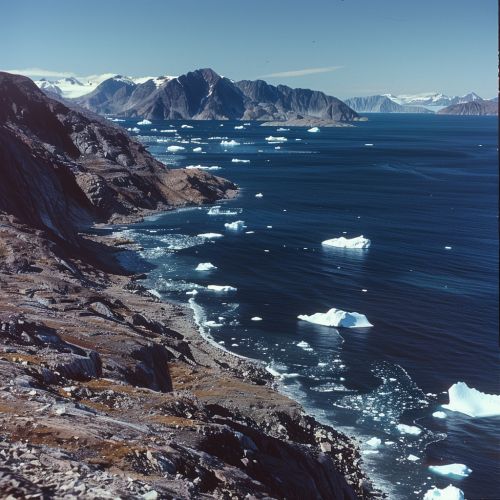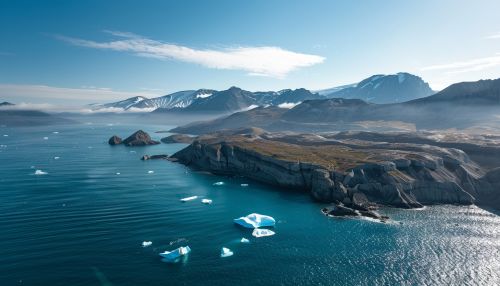Davis Strait
Geography
Davis Strait is a northern body of water that separates Baffin Island from Greenland. It is named after the English explorer John Davis, who sought a Northwest Passage to the Pacific Ocean during the 16th century. The strait is part of the larger Labrador Sea and connects to the Atlantic Ocean to the south and the Baffin Bay to the north.


The strait is approximately 480 km (300 mi) wide and its depth ranges from 300 to 3,000 meters (980 to 9,840 ft). The western side of the strait is dominated by the rugged coastline of Baffin Island, while the eastern side is marked by the glaciated landscapes of Greenland.
Climate
The climate of the Davis Strait is characterized by its polar conditions, with long, extremely cold winters and short, cool summers. The strait is often covered by sea ice, particularly in the winter months. The presence of this ice has significant implications for both the local ecosystem and human activities in the region.
Ecosystem
The Davis Strait is home to a diverse range of marine life. It is a significant habitat for various species of whales, including the bowhead whale, narwhal, and beluga whale. Additionally, numerous species of seals and walruses inhabit the region. The strait is also a crucial area for Arctic char, a species of fish that is of great importance to the local Inuit communities.
The strait's birdlife is equally diverse, with numerous species of seabirds such as auks, gulls, and eiders nesting along the coastlines of Baffin Island and Greenland. The presence of these birds is a testament to the productivity of the local marine ecosystem, which is fueled by the nutrient-rich waters of the strait.
Human Activity
Human activity in the Davis Strait is primarily related to fishing, shipping, and oil and gas exploration. The strait is a significant fishing ground for species such as shrimp and Greenland halibut. However, these activities are heavily regulated to prevent overfishing and to protect the local ecosystem.
Shipping through the strait is challenging due to the presence of sea ice, particularly in the winter months. However, the potential for a Northwest Passage through the strait and the surrounding waters has long been a subject of interest. With the ongoing effects of climate change, the possibility of a more navigable passage is becoming increasingly likely.
Oil and gas exploration in the region has been a contentious issue. While there is potential for significant reserves, the environmental risks associated with exploration and extraction are considerable. This has led to ongoing debates about the future of such activities in the strait.
